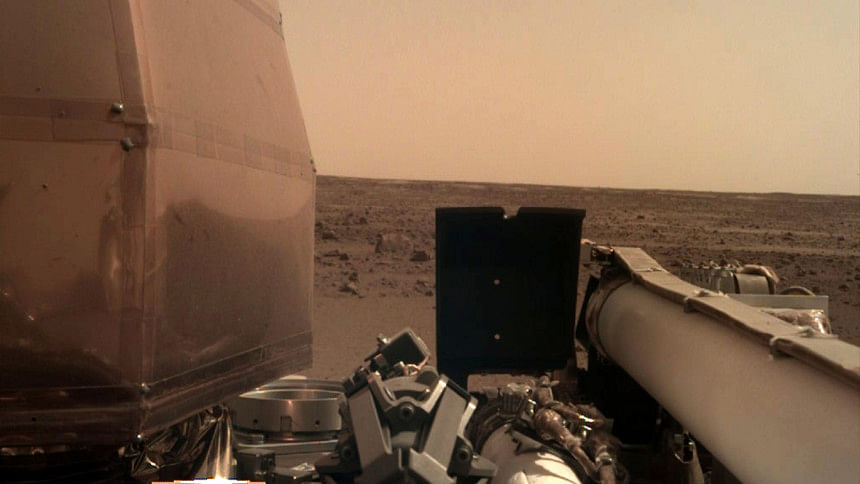What drives missions to Mars?

On Monday, November 26, NASA landed spacecraft InSight on Mars, after a long and difficult voyage—more than 300 million miles over six months. It is the eighth time NASA touched down on Mars but that did not diminish the significance of the endeavour, because it is the first probe to unearth details of what's under the surface of Mars.
The seven previous missions looked at the surface and the atmosphere. Bruce Banerdt, principal investigator of the project, said, "The basic idea of InSight is to map out the deep structure of Mars."
In order to do that, they will use a seismometer which will measure "Marsquakes." And in so doing, they will know a great deal about the layers that lie beneath the surface. They also have a probe that is going to go down about 16 feet to see how the temperature changes. They believe it will enable them to interpolate that all the way down to the core of the Red Planet.
We know, perhaps from science fiction movies, that the spacecraft has the ability to transmit as it goes down, and it is able to relay information to NASA spacecraft already in orbit. But this time around, things were a little different. InSight had two briefcase-sized spacecraft that were sent flying in formation with it. They served as a relay, sending information back to Earth. Three hundred million miles, sending two suitcases out there, and they end up in the right place. Mindboggling.
TV channels around the globe telecast the eruption of joy at the home base. Did the viewers realise what went on inside their brains? They were nervous. Nothing could go wrong. The spacecraft must split up, the back shell must come off, the parachute had to deploy, the landing equipment had to go down, the radar had to function, the engines had to start and heat shield had to go away. And all these things had to happen in seven minutes, the exact time for the landing. The precision was hair-raising.
The goal is to learn about how Mars—and in turn other planets in our solar system—formed over billions of years. Ultimately, the idea is to put human footprints on Mars. The more humans know about the place, the better they can think about what to do to sustain life there.
The Red Planet has for a long time inspired explorers and scientists. Robotic missions have found signs of water, but whether life exists beyond Earth still remains unknown. Mars has a history and many characteristics similar to Earth's. Scientists are trying to build on this knowledge, leading to research that could be put to use here on Earth.
A mission to our closest planetary neighbour is useful in more ways than one.
The experiment of travelling to Mars and learning how to inhabit it motivates nations to work together to achieve such an ambitious undertaking. And it provides a global sense of community based on knowledge.
Human curiosity about space is timeless. We are wired to leap into the unknown, discover new worlds, push the boundaries of knowledge, and then push even further. It is this doughty desire to explore and challenge the limits of what we know and where we have been that has advanced the human civilisation. Societies that encourage people to be curious about ideas move forward.
Space exploration such as the one commenced by InSight helps tackle fundamental questions about our place in the Universe. It proves how intelligent humans have become over time. But I think that it also reminds us how small humans are compared to the Universe which keeps expanding.
If missions to Mars make us more confident, they must also teach us humility. Astronaut, academic and best-selling author Carl Sagan once said, "Who are we? We find that we live on an insignificant planet of a humdrum star lost in a galaxy tucked away in some forgotten corner of a universe in which there are far more galaxies than people."
Growing up in the late '80s, many of us watched a series on BTV called "Cosmos", written and presented by Carl Sagan. We were spellbound to hear him talk about the vastness of the Universe. And the show helped expand the horizon of those who watched it.
Today, Bangladesh boasts of having her national flag hoisting in space. But we wonder if BTV shows programmes like "Cosmos" anymore.
Amitava Kar is a member of the editorial team at The Daily Star.





Comments